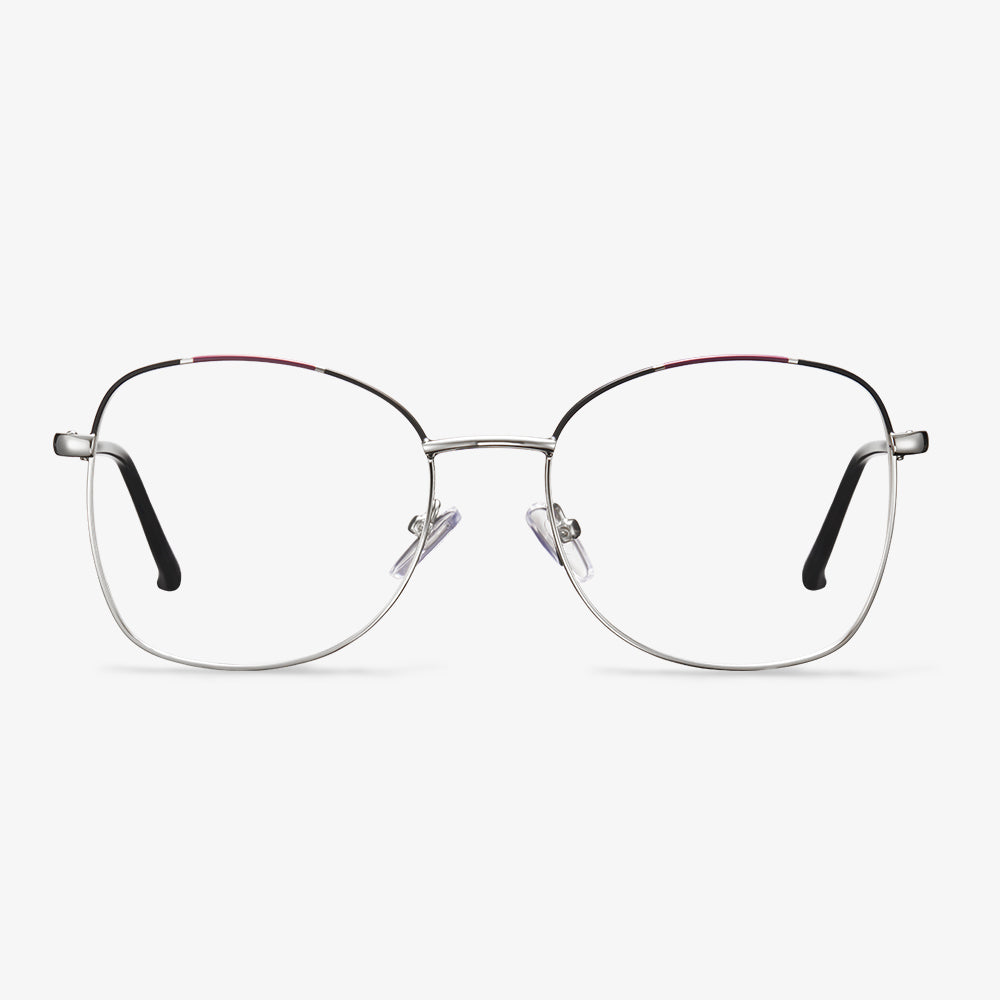A saddle bridge is a type of bridge.
The bridge of the nose can make your nose look slimmer. There are two main types. The keyhole distributes the weight of the glasses to one side of the nose rather than the top. It's a good choice for those with a broad nose. The Keyhole Bridge is old-fashioned in the classic style, like a Keyhole. This design creates a small gap in the top part to give the impression of space, thus making your nose look smaller. Saddle bridge is a more modern style and usually goes around your nose with almost no gaps at the top. This close contact will make your nose look tighter.
Gunnar Intercept blue light blocking glasses
The company is committed to improving people's visual experience when watching digital devices like computers, laptops, smartphones, pads, etc so that the wearers will no longer be affected by harmful light like short-wave blue light and glare refracting from these digital screens. They are continuously pursuing better protection of human eyes. Gunnar Intercept anti-blue light glasses filter or block harmful blue light from screens like computers. They relax eye muscles, soothe eye fatigue, prevent eye dryness, maintain constant moisture, and increase visual clarity.
Why are eyeglass frames are so expensive?
Plastic frames are often used for rimless glasses, but they are not very resistant to corrosion and break easily. The plate is a new type of plastic, and it is light and has high hardness, not easy to deform, but the surface is easily corroded by sweat. TR90 has features of wear resistance, good chemical resistance, solvent resistance, weather resistance, not burning, high-temperature resistance. Plastic steel does not contain any metal, but it is a kind of high-strength molecular material, lighter than TR90. They have a higher level in corrosion resistance and strength and other aspects. The frames made of good materials are more comfortable, durable, and textured in daily wear, and will not cause skin allergies. Plate, titanium, TR90, alloy are the most used materials on the market at present. The price is in dozens of yuan to hundreds, thousands of yuan.
What is the best lens material?
The world's first resin lens was made of CR-39 material, and CR-39 is still the main optical lens material in Europe and the United States. After the end of World War II, people found that compared with glass, the main lens material at that time, the light transmittance of CR-39 is high, and it can block ultraviolet light. In addition, CR-39 can be dyed, not easy to fog, and has small dispersion (CR-39's Abbe number is 58) and other benefits.
How much should a pair of prescription glasses cost?
Speaking of glasses, everyone's first feeling may be that it is not cheap to have a pair of prescription glasses. Just such a small pair of glasses, ranging from a few hundred dollars to a few thousand dollars. Why is the difference so big? So some people go online to buy glasses for dozens of dollars as if they look the same. But is it actually the same? There are a lot of differences between the glasses for dozens of dollars and for thousands of dollars, apart from the price. Also, you should be responsible for your own eyes.
Better glasses brands will adopt better designs to ensure beautiful appearance and structural safety, and have stricter quality standards. At first, these glasses are not cheap because the cost has increased a lot. In addition to the brand, different materials, process requirements, and mass production scale will also affect the cost and thus the final selling price. As for the question of what price glasses to choose, my suggestion is to choose the high-priced one within your budget. So, to choose a suitable pair of glasses, what aspects need to be considered?
Glasses Size - Frame Width
To really know how big a frame is, and how it will look on your face, you have to determine the width of the entire frame. The outer width of the frame is the distance between the visible areas on the left and right sides of the frame, namely, the distance between the frame and the junction of the two temples. The inner width of the frame is the distance between the inner sides of the two temples at 60mm behind the plane of the lens. This is just the contact point between the temple and the human temple. If it is too tight or too loose, it will affect the wearing comfort. The weight of the frame is evenly distributed across the bridge of the nose (or evenly distributed between the two nose pads on the bridge of the nose).
The history of chromatic contact lenses
Chromatic contact lenses, commonly known as color Lens, is a kind of Soft hydrophilic Contact Lens, belongs to the third category of medical devices. In 1971, Bausch & Lomb introduced the world's first pair of soft contact lenses. Before this, contact lenses are made of hard materials, with poor comfort, difficult to promote. Soon after, CIBA Vision made the lenses aqua blue to make them easier for users to operate. There were also special contact lenses with dark loops on the lenses, which were designed to help people with injured or defective eyes, like corneal white spots or iris defects, to conceal flaws, forming artificial pupils, so they were called beauty lenses.
Then, in the 1980s, American company Wesley Jessen (later bought by VisiCon) introduced the FreshLook chromatic contact lens, which used laser technology to print colored patterns onto the lens to change the color of the wearer's iris. Since then, contact lenses have been developed from a simple vision correction tool into a cosmetic with the effect of beauty makeup. It can brighten, enlarge, darken or change the color of the iris of the eye. At present, the common chromatic contact lenses are black, brown, gray, purple, blue, green, and so on. There are also a variety of color combinations or some special patterns.











































